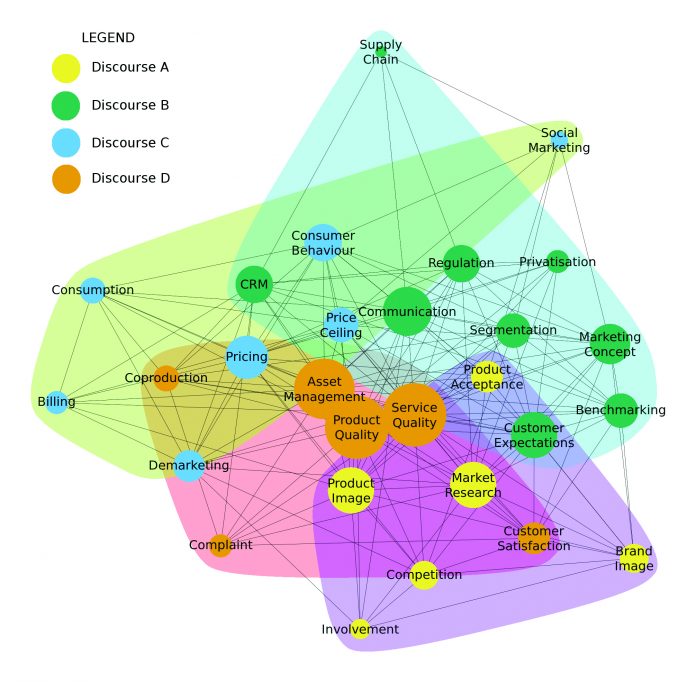A new IWA book shows utilities how marketing can win visibility and value
By James Workman
When La Trobe University professor Rhett Walker asked students why they want to study marketing, Peter Prevos replied that he didn’t. Walker’s course was compulsory but Prevos felt it had no relevance to his work as a water utility engineer. Challenged, Walker set out in a series of lectures to open this sceptical student’s mind, eventually inspiring a
dissertation in which Prevos applied marketing theory to the practice of managing a water utility, discovering in short, how to ‘engineer’ customer satisfaction.
Now Prevos has passed the torch to others. Customer Experience Management for Water Utilities was written, he told The Source, “for water utility professionals whose attitude towards marketing is similar to the one I once had–engineers and scientists who would like to know more about how to shape a customer-centric water utility”.
While the industry has long excelled at supplying safe and reliable water, public and private water utilities still face the criticism–by academics, regulators, users, and community groups–that they lack a customer focus. Utilities’ past reliance on science and technology weakened the relationship between the natural monopoly and the public, making utilities into what Russell Howcroft calls “lazy marketers”.
In recent years that’s changed. Water professionals have grown eager to better understand the human dimension of water consumption.
Young water professionals study what had previously been belittled as ‘soft’ sciences: cultural anthropology, urban sociology, behavioural economics, or the psychology of persuasion. These help inform and shape technical decisions about the introduction of new infrastructure, chemical or pressure management, rate structures, or demand management.
From a theoretical starting point, the book seeks to inspire water utility professionals to think differently about their occupation, to make more informed decisions, and to add value to their customers. Prevos shows how the real value of water lies not only in its capacity to sustain life, but also in its ability to create psychological value for those who use it. Also, rather than deflect complaints or correct people who are factually wrong about water quality, he advises embracing such complaints and avoiding questioning a customer’s views on water’s aesthetics.
But it is not a “how to manual”. Too often, management books can oversimplify the
complexities of a utility’s reality, promising to improve the organisation in seven simple steps or from the top down and inside out. By contrast, Customer Experience Management focuses more narrowly on the relationship between the utility and those mysterious minds on the other side of the meter. It offers readers a solid understanding of the often hidden value proposition that each “invisible utility” offers its clients, through provision of the most valuable product and service on earth: tap water.
Real value transcends the relatively small, discretionary amount humans must consume to
stay alive, he argues: “We can expand the biological perspective, which many publications about water promote, by looking at the social science of marketing.” By unlocking and interpreting the consumer’s experience, or mindshare, the book enables readers to implement initiatives that fit the context and culture in which their clients operate.
Prevos calls himself both an academic and a practitioner, or ‘pracademic’, who backs theoretical concepts of water utility marketing with cases showing how to implement them. The book includes internal marketing activities that demonstrate how to make employees more focused on customers. Another tool is a bank of statistically validated survey questions that water utilities can use to measure service quality.
The problem utilities face isn’t one of demand or delivery, but rather of value appreciation. They don’t need to convince people to want a product without which they cease to exist. And our industry is in fact so good at what we do that Uber has stated that they want to be “as reliable as running water”. What’s more, science, technology, engineering and mathematics (STEM) are the best way to ensure that customers receive a reliable service. Yet none of these models ensure that customers have the best possible experience.
The same person who thinks nothing of driving miles out of his way to drop US$4.95 on a Starbucks coffee, will invariably take its main ingredient for granted and complain about paying an extra nickel per cubic metre of potable water brought inside their homes. Why the discrepancy between the latte addict in the morning and the tap water user at night?
Prevos’ “mission is to bridge the gap” between need and want, use and value, physical reality and psychological perception, using social sciences towards a more STEAM (STEM plus the arts) understanding of water management.
“It is easy for water utilities to become complacent with our high level of technical service because we operate in a natural monopoly,” he acknowledges. “Regulators, politicians and community groups are challenging our monopoly on the level of service.” The time has come, he hopes, for water utilities to take the initiative and develop internal motivations to become customer-centric, recognise the problem of how they are perceived–and often taken for granted–and undertake proactive measures to become more valuable and visible.








